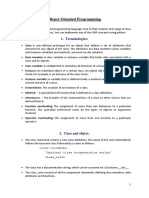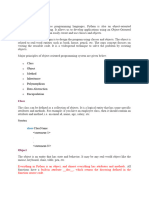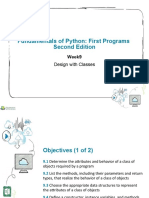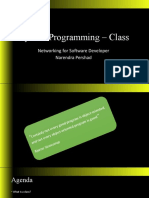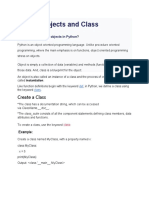0% found this document useful (0 votes)
24 views7 pagesOops
Object-Oriented Programming (OOP) is a programming style that organizes code using objects and classes to enhance understanding, maintenance, and reusability. Key concepts include classes, objects, constructors, and principles such as encapsulation, inheritance, polymorphism, and abstraction. Examples provided illustrate the implementation of OOP through various classes like Dog, Student, Car, Calculator, Book, and Employee.
Uploaded by
SHAHIDHACopyright
© © All Rights Reserved
We take content rights seriously. If you suspect this is your content, claim it here.
Available Formats
Download as DOCX, PDF, TXT or read online on Scribd
0% found this document useful (0 votes)
24 views7 pagesOops
Object-Oriented Programming (OOP) is a programming style that organizes code using objects and classes to enhance understanding, maintenance, and reusability. Key concepts include classes, objects, constructors, and principles such as encapsulation, inheritance, polymorphism, and abstraction. Examples provided illustrate the implementation of OOP through various classes like Dog, Student, Car, Calculator, Book, and Employee.
Uploaded by
SHAHIDHACopyright
© © All Rights Reserved
We take content rights seriously. If you suspect this is your content, claim it here.
Available Formats
Download as DOCX, PDF, TXT or read online on Scribd
/ 7





